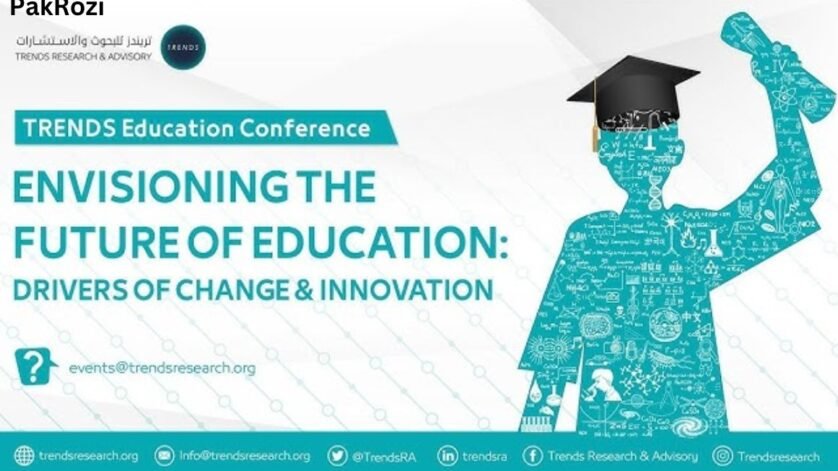The forums of education are now being transformed by various technological changes as much as new and emerging societal needs and innovative trends in teaching methodology. These trends will make the future of education quite different for both teachers and students. A few such trends are given here; from these, educators can draw some active moves in their careers in adapting to the change.
Table Of Contents
Leveraging Technology In Future Of Education
Technology continues to transform the face of teaching and learning with devices such as artificial intelligence (AI), augmented reality (AR), and virtual reality (VR) to bring more learning experiences into an immersive situation.
Online learning tools that include Google Classroom and Microsoft Teams enable effective communication and collaborations. Teachers are to master the use of such a tool in making the learning and engagement experience a unique occasion.
- Assess students’ learning progress using AI. Individual Feedbacks.
- Leverage the power of AR/VR to create experiential learning opportunities for students about complex ideas.
- Transform and gamify the lesson into something attractive and fun.
Inclusive Future Of Education
The definition of inclusive education has evolved over the years. So, its meaning includes; giving high-quality education for all students, regardless of their ability, from providing the needed accommodations for disabilities, as well as underprivileged students.
- Universalization of learning environments such that they cater to all students.
- Provision of assistive technology to the students with disabilities.
- Diversity and inclusion in the curriculum and teaching practice.
Personalized And Adaptive Learning
That era is going to be over when all students would learn the same. The Future Of Education is in personalized and adaptive learning, where each student will have instructions that would suit him.
- Use data analytics to know how students perform and to identify where they need to improve.
- Adapt lesson difficulty in real-time through an adaptive learning software.
- Design individual learning plans fit accordingly into very different student profiles.
It Is Collaborative And Global Learning
Education has made its way out of geographical boundaries. Now students can collaborate with other people across the world. With global learning, students can build cultural understanding and prepare for a more interconnected world.
- Create facilities for virtual exchange programs and global classroom collaborations.
- Encourage project-based learning with international teams to solve real-world problems.
- Utilize digital learning platforms to present students with exposure to diverse viewpoints and ideas.
Focus On Lifelong Learning
It is because of rapid technological changes that people are in constant need for lifelong learning. Teachers hold a vital role in an environment of lifelong learning.
- Use digital learning to help create critical thinking and problem solving in students.
- Give scope for self-learning through certification and online courses.
- Accentuate the workforce-readiness skills of flexibility, communications, and collaboration.
Hybrid And Blended Learning Modes
The pandemic made people pick up hybrid learning modes that integrated both distance and classroom teaching. Many of these flexible models are to characterize further teaching.
- Plan your instruction to incorporate easily into real and virtual learning spaces
- Use multimedia such as videos and podcasts and other digital recreations to enrich the curriculum
- Provide access to content for asynchronous learning
Foster Social-Emotional Learning (SEL).
The importance of emotional intelligence is recognized within education as much as possible well-being. In fact, social-emotional learning prepares students with skills for resilience, empathy, and interpersonal ability.
- Activities that facilitate SEL can include mindfulness practices and discussions in the group conditions.
- Support student mental health by professional development for teachers.
- Create an environment where the students feel safe, accepted, and understood.
Preparation For Future Careers
Future Work-The dynamics of work will mean constant evolving skills and mind-sets; Teachers, therefore, have the burden of helping students learn those new skills including creativity, digital literacies, and entrepreneurial minds.
- Incorporate and blend STEM and STEAM courses.
- Interdisciplinary projects and actual case studies
- Provide guest lectures and mentorship for students by industry partners
Conclusion
The future is most exciting but seems full of opportunities that will require flexibility and novelty from educators. They can play a great role in shaping what next generation by technology use, personalized and global learning, and train their students from lifelong learning to careers in their future. Adopting these new trends will cause teaching opportunities and ensure relevance and impact in a rapidly changing world.
FAQ’s
Which teaching is the latest trend in the education industry?
The latest trend in education is personalized learning, hybrid models of teaching, and the use of AI and AR/VR. It is also social-emotional learning and gamification.
What does the future look like for teaching?
The future of teaching is techno savvy, where students will learn from personalized and hybrid learning methods, but more important will be developing critical skills, such as creativity, emotional intelligence, and adaptability for future careers.
